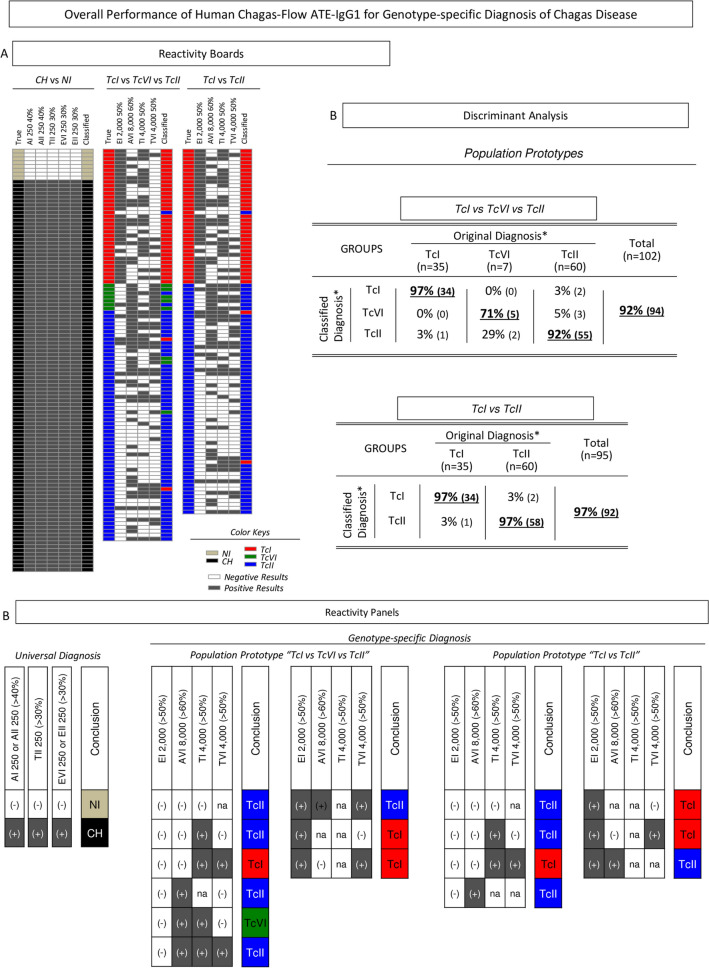Figure 7.
Overall performance of Human Chagas-Flow ATE-IgG1 for DTU-specific diagnosis of Chagas disease. (A) Reactivity boards of “Original Diagnosis” and “Classified Diagnosis” data for individual samples tested for universal (CH vs NI, left diagram) and DTU-specific diagnosis for two population prototypes TcI vs TcVI vs TcII (central diagram) and TcI vs TcII (right diagram). “Original Diagnosis” comprises the DTU identified by molecular approaches used as reference “gold standard” method to categorize the samples. “Classified Diagnosis” refers to the results achieved by serological analysis by Human Chagas-Flow ATE-IgG1. The selected sets of attributes (“target-antigen/serum dilution/cut-off”) determined by the decision tree analysis were applied in sequential algorithms to yield positive results (dark grey) and negative results (white) and define the “Classified Diagnosis” status to each individual samples using a color key panel to identify non-infected controls (NI, light brown), Chagas disease infected (CH, black), TcI infection (red), TcVI infection (green) and TcII infection (blue). (B) Discriminant analyses of combined Chagas-Flow ATE-IgG1 were employed to calculate the overall performance of Human Chagas-Flow ATE-IgG1 for DTU-specific diagnosis of Chagas disease. (C) Reactivity panels for selected sets of attributes compile all possibilities of sequential discretized data and define the diagnostic conclusions for universal and DTU-specific diagnosis of Chagas disease according to a color key panel: TcI (red), TcVI (green) and TcII (blue) and underscores the not applicable cases (n.a.).

